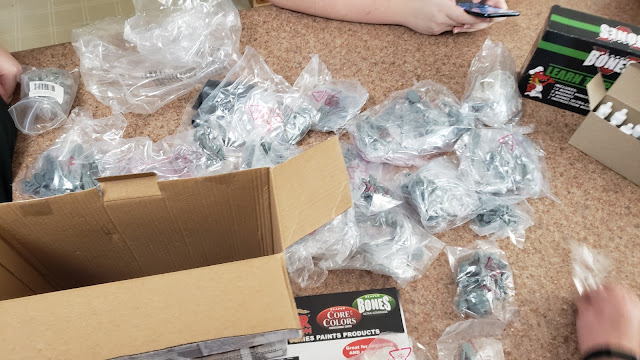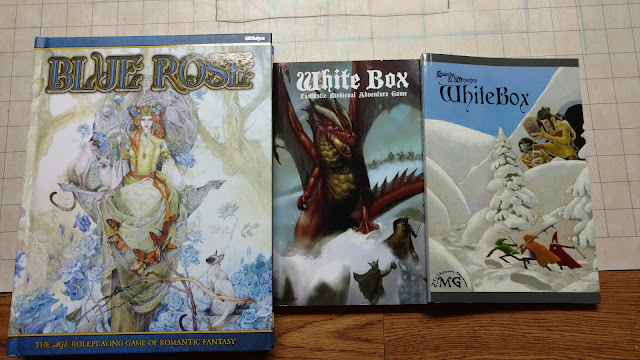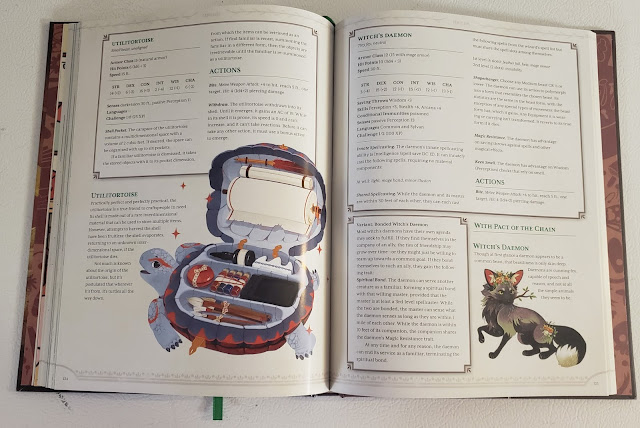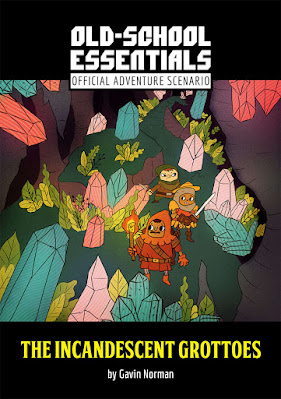I touched briefly on this with my posts on Building a Darklord, Castle Amber, and Horror Adventures, but one of the key strengths of Ravenloft has always been its mutability. It can go anywhere, it be what you need it to be and while some might bemoan its pastiche of horror literature stereotypes, that same familiarity allows it to work in a lot of ways with other books and games.
While I am perfectly happy, indeed happier now, that Ravenloft is more amorphous and less of a "world" there are plenty of sources out there if you want to expand it beyond what lives in between the book covers now to a larger world.
Here are some resources I am planning on using to make my Ravenloft campaign (whenever I can get that going!) a little more personalized.
Ravenloft and Cthulhu
While this seems to be a "no-brainer" just slapping Cthulhu into a game almost never works. Sure there are some great monsters here, but the real value-add here are the sections on running a cosmic horror game. This is a great overall resource, and a fantastic one when running an adventure in Bluetspur.
Ravenloft and Fantasy Horror
I mentioned already the utility that Pathfinder's Horror Adventures provides in setting up some details for a Dark Fantasy Horror game. The 3.x d20 system in Pathfinder is similar enough to the 5e one in Ravenloft to provide plenty of ideas with a minimum of conversion needed. If you must have them, the Fear, Sanity, and Corruption rules can be ported over to 5e Ravenloft. Even some of the Feats can be used (but used sparingly). Spells and Magic items can be ported over almost as is really.
In fact, I have found it so useful in the last few days that I have moved it from my "Pathfinder" shelf to my "Horror" shelf.
BlackRose
Going back to some of the earliest posts on this blog are my ideas for a BlackRose game. Now with the new 5e Blue Rose out, it is practically begging me to use it for this. For me, the ideas behind BlackRose have changed a bit. I think a Domain that is similar to Aldea, but maybe more of one of sadness. Not Aldea, but using a lot of the ideas and rules. Something more akin to my Kingdom of Rain. Which has one foot planted squarely in Blue Rose and another in a melancholic sort of Folk Horror that would find a home in Ravenloft. I ran an adventure under the title "Kingdom of Rain" a while back. It was a little Aldea, a little bit Innsmouth, and a little bit Alton, Illinois. There are some solid Fey elements to it as well; I introduced my River Hags here. A version of Kingdom of Rain is set to be published under the name "Witching Weather," so watch this space for more on that.
Ravenloft and the Runewild
Speaking of fey lands, the Runewild from Sneak Attack Press also provides a bit of a wilder fey world with tinges of Horror and Dark Fantasy. If you ever wanted to expand on the Domain of Tepset then this is a fantastic source. Again, as with the Horror Adventures and Blue Rose, there is material here that can be dropped into Ravenloft "as is" with very little modification. The Runewild also help build up that "dream-like feeling" I like to use in Ravenloft before hitting characters with the Nightmares.
My Kingdom of Rain lives in the intersection of the triquetra-shaped Venn diagram of Ravenloft, Blue Rose, and Runewild. I can also use this for expanding my new Domain with The Snow Queen as the Darklord. Though do I REALLY want my Kingdom of Rain converted to a Dark Domain? I'll have to suss that one out as I go through my books here.
Ravenloft and Ravenloft
Sounds odd, but most of the grief the new book is getting online is "it's not like the old Ravenloft." Ok, fine. If you must, make it like it. Most of the Ravenloft books are fluff anyway. Grab what you want from any of the old books and reuse it. Want Viktor back instead of Viktra? Ok, do that. I might create a Domain where they are both there and there is an intense rivalry between them. I am thinking Father and Daughter. Their creations of course are caught in this battle. Rival evil scientists. Using their creations to get at the other. Both wanting to capture their opponents' creations to learn their secrets. Viktor is intensely jealous of his daughter fearing her creation Else is superior, all the wile claiming she knows nothing that he did not teach her. Viktra hates her father for never sharing his work and finds Adam to be an abomination.
The more I type this, the more I like it. Go all Hammer Horror for Viktor and Giallo horror for Viktra. Set them on different sides of Lamordia where their minions search the countryside for parts for their experiments and to hopefully capture one of the more successful ones of their rival Darklords.
It's one part Frankenstein Created Woman (1967), one part Lady Frankenstein (1971), and one part War of the Gargantuas (1966). All set in Fantasy Gothic Horror Switzerland. Sprinkle in a little bit of Reanimator and I am good to go.
Horror is my favorite seasoning for most games. Ravenloft lets me do this with everything.





















